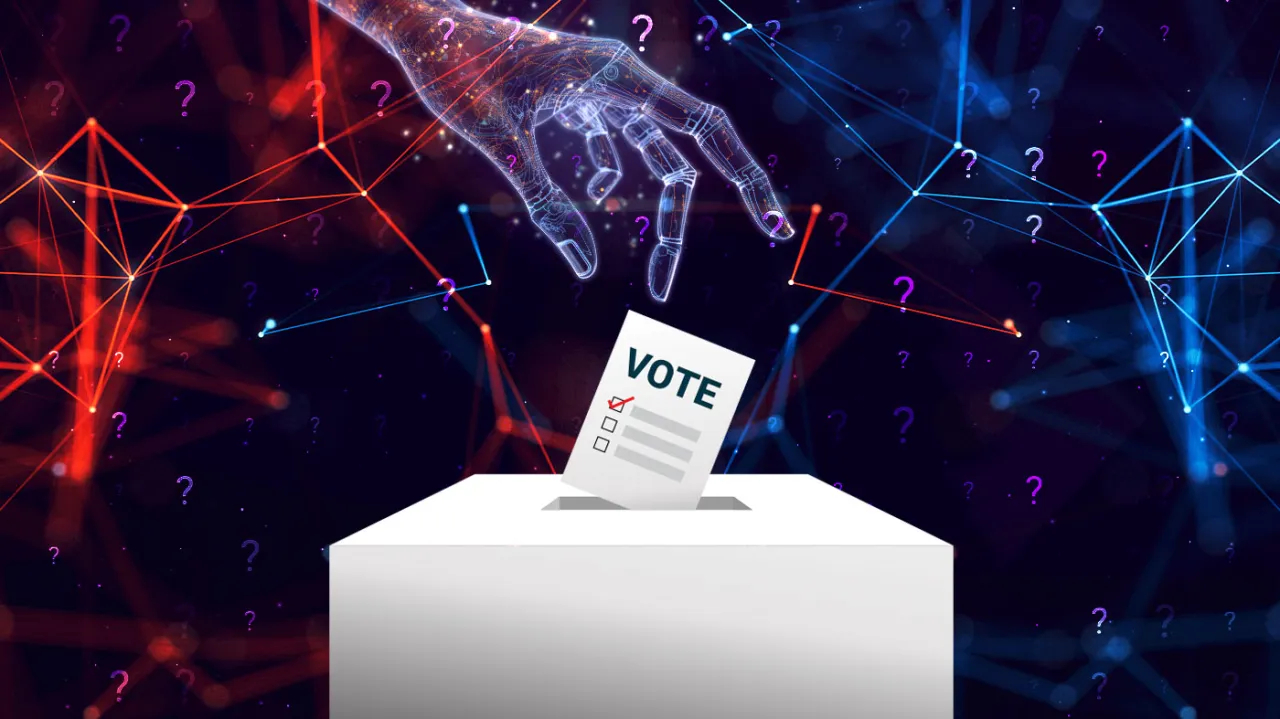How can biotechnology be harnessed for economic development?

- 04 Sep 2024
The Centre unveiled its BioE3 (Biotechnology for Economy, Environment and Employment) policy last week.
On the face of it, the policy appears to be a routine attempt to create incentives and opportunities to energise growth in the biotech sector. But it is, in fact, about transforming existing industrial and manufacturing processes across various sectors to make them more sustainable and environment-friendly, and less wasteful.
The policy seeks to achieve this by harnessing the power of biotechnology, and developing new manufacturing methods that replicate, or mimic, processes found in natural biological systems.
Potential Benefits of Biotechnology:
- Medical Science:
- Cures for genetic disorders.
- Development of targeted therapies and treatments.
- Agriculture:
- Creation of new plant varieties with desirable traits.
- Increased crop yields and resistance to pests and diseases.
- Environmental Sustainability:
- Bioplastics: Eco-friendly alternatives to traditional plastics (e.g., polylactic acid from corn starch).
- Carbon Capture: Micro-organisms capture and convert CO2 into biofuels, reducing the need for CO2 storage.
- Synthetic Biology:
- Design of novel organisms for specific functions.
- Laboratory-grown organs for transplantation, reducing reliance on organ donors.
- Industrial Processes:
- Replacement of chemical processes with biological ones, reducing pollution.
- Production of sustainable materials and fuels.
BioE3 Policy Benefits for India:
- Economic Impact:
- Expected $2-4 trillion from biomanufacturing over the next decade.
- Prepares India for future economic opportunities in biotechnology.
- Research and Development:
- Promotes competencies, research, and talent development.
- Supports technology development and maturation.
- Biomanufacturing Hubs:
- Establishes facilities for producing bio-products: chemicals, enzymes, functional foods, and more.
- Focus areas: bio-based chemicals, smart proteins, precision therapeutics, climate-resilient agriculture, carbon capture, and marine/space research.
- Future Technologies:
- Supports development of life support systems for space and innovative marine-based products.
- Encourages collaboration among multiple government departments for effective implementation.
Council of Europe’s Convention on Artificial Intelligence

- 06 Sep 2024
- The United States, the European Union, and the United Kingdom are anticipated to sign the Council of Europe’s new convention on artificial intelligence (AI), marking it as the first “legally binding” international treaty on AI.
- The treaty, officially named the Council of Europe Framework Convention on Artificial Intelligence and Human Rights, Democracy and the Rule of Law, was opened for signature during a Council of Europe Ministers of Justice conference in Vilnius, Lithuania.
Purpose and Approach:
- Human Rights Focus:
- The convention prioritizes human rights in regulating both public and private-sector AI systems.
- It seeks to address concerns that fragmented regulations by individual countries could impede the development of AI technology.
- Risk-Based Framework:
- The treaty adopts a risk-based approach to the design, development, use, and decommissioning of AI systems.
- It is applicable to AI systems used across public sectors, including entities acting on behalf of the government, and private sectors, covering multiple geographies.
Key Provisions and Obligations:
- Accountability:
- Signatories are accountable for harmful and discriminatory outcomes resulting from AI systems.
- They must ensure AI outputs respect equality and privacy rights and provide legal recourse for victims of AI-related rights violations.
- Human Rights and Democratic Integrity:
- AI systems must be consistent with obligations to protect human rights.
- They must not undermine democratic institutions, including judicial independence and access to justice.
- Measures must be implemented to safeguard democratic processes, including fair access to public debate and freedom of opinion.
- Exemptions:
- Exemptions include national security and research and development activities.
- Parties are obligated to address risks related to the lifecycle of AI activities by both public and private actors.
International Context:
- Related Agreements:
- The treaty complements other AI regulations and agreements, such as the G7 pact on AI (October 2023), Europe’s AI Act, and the Bletchley Declaration signed by 28 countries (November 2023).
Challenges and Concerns:
- Enforcement Issues:
- Despite being termed “legally binding,” the treaty lacks specific provisions for punitive sanctions like penalties or fines.
- Compliance is primarily monitored, which may not be a strong deterrent for enforcement.
- Initial Approvals:
- Hanne Juncher, Director of Security, Integrity and Rule of Law at the Council, indicated that 10 participants are expected to be among the first to approve the convention.
- This early support reflects the significant investment and satisfaction of these participants in the treaty’s outcome.
Conclusion:
- The Council of Europe’s convention represents a pioneering step towards a globally coordinated approach to AI regulation, emphasizing human rights and democratic principles. However, its effectiveness will depend on the development of robust enforcement mechanisms and broader adoption by key international stakeholders
Many elections, AI’s dark dimension

- 18 Mar 2024
Why is it in the News?
With a series of elections to be held across the world in 2024, the potential of AI to disrupt democracies cannot be dismissed.
Context:
- The rapid advancement of Artificial Intelligence (AI) marks a significant turning point in human history.
- With the rise of Generative AI (GAI), the possibility of achieving Artificial General Intelligence (AGI) becomes increasingly feasible, raising questions about its potential to mimic human abilities.
- Thus, exploring AI's profound influence on human life, particularly within electoral contexts and broader societal realms, is imperative.
What is Generative AI (GAI)?
- Generative AI, short for Generative Artificial Intelligence, represents a branch of artificial intelligence focused on creating new content rather than simply processing or analyzing existing data.
- Unlike traditional AI systems, which are designed to recognize patterns or make predictions based on historical data, generative AI models have the capability to generate new data that resembles real-world examples.
- These models work by learning patterns and structures from large datasets and then using that knowledge to create new content.
- They can produce various types of content, including images, text, audio, and even video.
- For example, a generative AI model trained on a dataset of human faces can generate realistic-looking images of faces that have never existed before.
- They can produce various types of content, including images, text, audio, and even video.
- One of the key technologies behind generative AI is deep learning, particularly a type of neural network called a generative adversarial network (GAN).
- In a GAN, two neural networks are pitted against each other: a generator and a discriminator.
- The generator creates new data samples, while the discriminator tries to distinguish between real and fake data.
- Through this adversarial process, the generator learns to produce increasingly realistic content.
- Generative AI has a wide range of applications across various industries.
- In the field of art and design, it can be used to generate new artwork, music, or even fashion designs.
- In entertainment, it can create realistic characters and environments for video games and movies.
- In healthcare, it can generate synthetic medical images for training diagnostic algorithms.
- However, the technology also raises ethical concerns, such as the potential for misuse, copyright issues, and the creation of fake content.
The Role of Artificial Intelligence (AI) in Shaping Electoral Landscapes:
- A Transformative Influence- AI's Ascendancy in Politics: The integration of artificial intelligence (AI) into electoral processes represents a profound transformation in global political dynamics.
- As nations gear up for elections, the incorporation of AI technologies introduces new variables that require a reassessment of conventional campaign methodologies and voter outreach strategies.
- In the context of upcoming elections, including India's extensive seven-phase general election, AI emerges as a decisive factor influencing electoral trajectories.
- The deployment of Generative AI, with its ability to conduct dynamic simulations and replicate real-world interactions, presents unprecedented opportunities and challenges for political stakeholders and the electorate.
- Harnessing AI for Campaign Innovation and Voter Engagement: Political entities and candidates are leveraging AI-driven tools to analyze vast datasets, craft targeted messaging, and optimize campaign blueprints.
- AI-powered predictive analytics empower parties to pinpoint swing voters, tailor messages to specific demographics, and deploy resources more precisely.
- Additionally, AI-enabled sentiment analysis of social media platforms furnishes real-time insights into voter attitudes and emerging concerns, informing campaign narratives and responsiveness strategies.
- Moreover, AI's impact extends beyond campaign frameworks to encompass voter engagement and mobilization endeavors.
- Through AI-driven chatbots, personalized interactions with voters are facilitated, addressing inquiries, disseminating information, and fostering voter participation.
What are the Concerns Regarding AI's Impact on Electoral Integrity?
- Challenges Posed by Deep Fakes: The expanding presence of AI within electoral arenas prompts apprehensions regarding its implications for democratic processes and the integrity of elections.
- The emergence of 'Deep Fake' technology, capable of generating convincingly realistic yet fabricated audio, video, and textual materials, presents a formidable obstacle in identifying and combatting misinformation and disinformation campaigns.
- Deep fakes produced by AI possess the capacity to deceive voters, manipulate public opinion, and erode trust in democratic institutions, thus distorting the integrity of electoral outcomes.
- Impact on Public Discourse and Decision-making: Moreover, the utilization of AI-powered algorithms in social media platforms for content curation and recommendation purposes raises concerns regarding filter bubbles, echo chambers, and algorithmic bias.
- These algorithms, driven by AI, may inadvertently amplify divisive content, perpetuate existing biases, and contribute to the segmentation of public discourse, consequently influencing voter perceptions and decision-making processes.
What are AI Influences its challenges, and Mitigation Strategies?
- As artificial intelligence (AI) permeates various spheres of society, including electoral contexts, addressing the concept of AI influence becomes increasingly critical.
- AI influence refers to the ability of AI-driven tactics to shape human behavior and decision-making processes, often without individuals' explicit awareness or consent.
- Challenges in Addressing AI Influence: A primary challenge in addressing AI influence is mitigating its impact on electoral dynamics.
- AI-powered algorithms can analyze extensive data sets to predict and influence voter behavior, potentially affecting electoral outcomes in ways that may not align with democratic principles or voter preferences.
- To counter this, safeguards must be implemented to prevent undue AI-driven influence on electoral processes and outcomes.
- Promoting Transparency and Accountability: Transparency and accountability are crucial in addressing AI influence.
- Electoral authorities and policymakers should establish clear guidelines and regulations governing the use of AI in political campaigns and voter engagement efforts.
- This includes mandates for disclosing the use of AI-driven algorithms, data sources, and methodologies in campaign strategies, enhancing public awareness and understanding of AI's role in elections.
- Protecting Democratic Values: Efforts to combat AI influence should prioritize safeguarding democratic values and electoral integrity.
- Measures must be implemented to detect and mitigate AI-driven manipulation, such as disinformation campaigns, deep fakes, and algorithmic bias.
- Collaborative approaches involving electoral authorities, technology firms, civil society organizations, and academia are essential to develop effective tools and techniques for detecting and countering AI-driven threats to electoral integrity.
- Empowering Voter Literacy: Promoting media literacy and digital literacy among voters is crucial for combating AI influence.
- By equipping voters with the skills to critically evaluate information sources, distinguish fact from fiction, and identify manipulation tactics, individuals can resist the influence of AI-driven propaganda and make informed voting decisions.
- Educational initiatives, public awareness campaigns, and media literacy programs are vital for enhancing voter resilience against AI-driven misinformation and manipulation.
Additional Measures for Ensuring Electoral Integrity:
- Incorporating Ethical Guidelines into AI Governance: Furthermore, the ethical dimensions of AI governance should inform the development and application of AI technologies within electoral contexts.
- Ethical AI governance frameworks should prioritize principles such as fairness, transparency, accountability, and adherence to democratic values.
- This entails conducting comprehensive risk assessments, ensuring transparency and explainability in algorithms, and establishing mechanisms for independent oversight and accountability.
- Adopting Proactive Strategies: Policymakers, electoral authorities, and civil society actors should embrace proactive strategies to uphold electoral integrity and democratic principles in the age of AI.
- Implementing robust regulatory frameworks, transparency mandates, and oversight mechanisms is crucial for mitigating the risks associated with AI-driven manipulation and disinformation campaigns.
- Furthermore, investments in digital literacy initiatives and media literacy programs can empower voters to critically assess information sources, distinguish between fact and fiction, and resist manipulation efforts.
Way Forward:
- The risks associated with AI pose a substantial threat, surpassing concerns regarding biases in its design and development.
- AI systems inherently tend to manifest adversarial traits, for which effective mitigation strategies have yet to be fully realized.
- Beyond electoral implications, India's position as a digital frontrunner necessitates a cautious approach towards AI adoption, recognizing both its potential advantages and disruptive capabilities.
- While AI offers numerous benefits, it is imperative for the nation and its leaders to acknowledge its potential for malevolence.
- India's prominence in digital innovation presents both opportunities and challenges, as the advancement of AI, including AGI, brings both advantages and risks.
- Addressing the complexities of AI policy requires amplifying democratic voices and resisting the tendency to cede policymaking authority to a select few tech conglomerates.
Conclusion
The emergence of AI marks a significant milestone in human evolution, impacting electoral dynamics and social harmony in profound ways. While AI offers remarkable progress, it demands careful oversight to minimize its disruptive effects and uphold democratic values. As we venture into the realm of AI, wise decision-making and forward-thinking are essential to steer toward a future characterized by ethical AI governance and conscientious innovation.
India’s R&D Funding, Breaking Down the Numbers

- 14 Mar 2024
Why is it in the News?
The announcement in the interim Budget for 2024-25, of a corpus of ?1 lakh crore to bolster the research and innovation ecosystem within the country, has sparked enthusiasm within the scientific and research communities.
Context:
- In the current scenario, the recent allocation of a substantial ?1 lakh crore in India's Interim Budget for 2024-25 to enhance the research and innovation ecosystem underscores the nation's dedication to advancing scientific pursuits.
- Additionally, the decision to expand the iconic slogan 'Jai Jawan Jai Kisan' to 'Jai Jawan, Jai Kisan, Jai Vigyan, Jai Anusandhan' signifies a renewed focus on research and innovation as essential elements of development.
- Evaluating the present state of India's research and development (R&D) landscape, including its funding, output, and the potential impact of recent initiatives on nurturing a conducive environment for research and innovation, is imperative.
Current Outlook of India's R&D Landscape:
- Gross Expenditure on Research and Development: India's R&D sector has witnessed substantial growth, with Gross Expenditure on Research and Development (GERD) increasing from ?6,01,968 million in 2010-11 to ?12,73,810 million in 2020-21.
- Despite this growth, India's research investment as a percentage of GDP remains at 0.64%, lagging behind major developed and emerging economies like China (2.4%), Germany (3.1%), South Korea (4.8%), and the United States (3.5%).
- Academic Talent: Despite the relatively lower GDP allocation for R&D, India has emerged as a key producer of academic talent, annually producing an impressive 40,813 PhDs, ranking third globally after the United States and China.
- Research Output: India's research output remains substantial, ranking third globally with over 3,00,000 publications in 2022, showcasing the nation's robust research ecosystem and its dedication to advancing knowledge across various fields.
- Innovation: India demonstrates commendable performance in patent grants, securing the sixth position globally with 30,490 patents granted in 2022.
- While this number is lower compared to the U.S. and China, it reflects India's evolving innovation landscape and its potential for further growth in intellectual property creation.
- Major Sponsors: In India, GERD is primarily driven by the government sector, including the central government (43.7%), State governments (6.7%), Higher Education Institutions (HEIs) (8.8%), and the public sector industry (4.4%), with the private sector industry contributing only 36.4% during 2020–21.
- Investment in R&D: According to R&D statistics (2022-23) from the Department of Science and Technology, India's total investment in R&D reached $17.2 billion in 2020-21.
- Within this sum, 54% ($9.4 billion) is allocated to the government sector, predominantly utilized by four key scientific agencies — the DRDO (30.7%), the Department of Space (18.4%), ICAR (12.4%), and the Department of Atomic Energy (11.4%).
Major Challenges Facing R&D:
- Private Sector Inertia: Despite India's significant Gross Expenditure on Research and Development (GERD), private industries contribute only 37% of the country's R&D funding, reflecting a discrepancy compared to the global trend where business enterprises typically contribute over 65%.
- Low Participation by Higher Education Institutions (HEIs): HEIs play a minor role in R&D investment, contributing only 8.8% ($1.5 billion), limiting their potential contribution to research and innovation.
- Brain Drain: Talented researchers often migrate to countries with better research infrastructure and funding opportunities, leading to a loss of skilled manpower and hindering R&D progress.
- Inadequate Education and Training: The education system may fail to adequately equip students with the requisite skills and knowledge needed to excel in R&D, posing a challenge to innovation and scientific advancement.
- Bureaucratic Hurdles: Complex procedures and bureaucratic red tape can impede research initiatives, delaying progress and discouraging potential investors from engaging in R&D activities.
- Limited Collaboration with Academia: A gap exists between academic research and industry needs, hampering the effective transfer of knowledge and technology, and inhibiting the development of innovative solutions to real-world problems.
Proposed Measures:
- Embrace a Collaborative Approach: Fostering collaboration among the government, business enterprises, and Higher Education Institutions (HEIs) is imperative to harness the full potential of science, technology, and innovation for driving economic growth and technological progress.
- Promote Public-Private Partnerships: Encouraging collaboration between academia and industry can facilitate the translation of research findings into commercial applications, bridging the gap between theoretical knowledge and practical implementation.
- Optimize Resource Allocation: Directing resources towards safeguarding intellectual property rights and addressing technical challenges can unlock new markets and spur innovation.
- Provide Government Subsidies to Stimulate Private Sector Investment: Implementing government initiatives such as tax incentives and grants can incentivize increased private sector investment in Research and Development (R&D), bolstering India's R&D ecosystem and fostering stronger industry-academia partnerships for knowledge exchange and innovation.
- Prioritize Skill Development: Reforms in education that prioritize the development of critical thinking, problem-solving, and research skills are essential to nurture a workforce capable of driving innovation and scientific advancement.
- Streamline Bureaucratic Processes: Simplifying regulatory procedures and regulations can expedite research projects, attract investments, and create a conducive environment for R&D activities.
- Incentivize Innovation: Introducing government schemes and awards to recognize and reward innovative research endeavors can incentivize scientists, researchers, and businesses to pursue groundbreaking innovations that contribute to societal progress and economic development.
Government Initiatives:
- National Deep Tech Startup Policy (NDTSP): Recent initiatives, such as the National Deep Tech Startup Policy (NDTSP) and the Anusandhan National Research Foundation (ANRF) Act, signal a strong commitment to fostering research and innovation.
- The NDTSP aims to incentivize private sector engagement in R&D, while the ANRF Act seeks to bridge the R&D investment gap and nurture a robust research culture within HEIs.
- Anusandhan National Research Foundation (ANRF) Act: Enacted to address India's persistent R&D investment gap, this legislation aims to cultivate a thriving research culture within Higher Education Institutions (HEIs) and drive innovation across various sectors.
- UchhatarAvishkarYojana (UAY): Geared towards promoting innovation that addresses industry needs and enhances India's manufacturing competitiveness, UAY fosters collaboration between academia and industry, both domestically and internationally, to drive advancements in research and technology.
- Impacting Research Innovation & Technology (IMPRINT): This initiative endeavors to tackle pressing engineering challenges by facilitating interdisciplinary research collaborations and translating knowledge into practical solutions across ten designated technology domains.
- Establishment of Research Parks: Research parks established at premier institutes such as IIT Delhi, IIT Guwahati, and IIT Kharagpur serve as platforms for fostering collaboration between academia, industry, and entrepreneurial ventures, facilitating the establishment of R&D units, and promoting innovation.
- Impact of Recent Initiatives: These initiatives, coupled with the allocation in the interim Budget, are poised to drive India's research and innovation agenda forward, particularly in burgeoning industries.
Way Forward:
- India's technological and manufacturing ambitions rely on a pivotal transformation within its R&D domain, necessitating a dual-pronged strategy:
- Encouraging active participation from the private sector, alongside
- Strengthening the research infrastructure within academia.
- Embracing a multifaceted approach that engages a spectrum of stakeholders is imperative to confront the challenges and unlock the full potential of R&D, fostering India's economic expansion and global competitiveness.
- Drawing insights from the R&D frameworks of developed nations while leveraging India's inherent strengths in agile decision-making and strategic alignment could catalyze a formidable evolution within its R&D landscape.
Conclusion
While significant strides have been made, there is a need for increased funding, stronger industry-academia collaboration, and policy measures to incentivize private sector involvement. Recent initiatives such as the NDTSP and the ANRF Act represent positive steps towards realizing India's potential as a powerhouse of research and innovation. By creating a conducive environment for research and innovation, India can pave the way for sustainable development and prosperity in the years to come.
Preserving Democratic Integrity Through Privacy Safeguards in the Digital Age

- 26 Feb 2024
Why is it in the News?
The big data economy, powered by massive datasets and unprecedented levels of personal information has fundamentally altered how a country conducts elections, and how people vote.
Background:
- The emergence of the big data economy has significantly altered the landscape of elections and individual voting patterns, offering both benefits and challenges.
- As the general elections approach in two months, it becomes imperative to delve into the far-reaching effects of extensive datasets on political scenarios.
- Equally important is a comprehensive understanding of the privacy implications, emphasizing the critical necessity for robust data protection measures, especially in anticipation of the upcoming elections in India.
What are the Challenges Arising from Big Data's Influence on Elections?
- Precision Targeting and Tailoring: Big data enables political campaigns to engage in micro-targeting, tailoring messages and campaign content to specific demographics or individual voters.
- By analyzing extensive datasets, candidates gain insights into voters' preferences, behaviors, and opinions, facilitating highly customized outreach efforts across various communication channels.
- Lack of Transparency and Consent: A significant concern is the opacity surrounding collecting, processing, and utilizing personal information.
- Voters often lack awareness of databases containing detailed personal data and the extent to which it's used for political purposes.
- Informed consent becomes elusive, as individuals are unaware of how their data is harnessed, limiting their ability to control its usage.
- Reinforcement of Power Dynamics: The abundance of data amplifies the power of political entities to influence voters through targeted messaging and strategic communication.
- Candidates can craft narratives tailored to specific groups, addressing issues and concerns discerned from data analysis.
- This sophisticated targeting extends beyond demographic attributes, delving into personal preferences and habits.
- Risks of Manipulation and Exploitation: While big data offers campaign efficiency and targeted communication, it also presents risks of manipulation and exploitation.
- Unethical practices, such as the strategic dissemination of misinformation to exploit voter sentiments, can undermine the integrity of the electoral process.
- Information asymmetry between political entities and voters raises concerns about privacy invasion and democratic principles.
What are the Consequences of Social Media and Networks Effects?
- Network Effect: The network effect, central to social media platforms, describes the increasing value and utility of a network as more users join.
- Larger user bases offer enhanced connectivity, content creation, and interaction opportunities, drawing individuals to these platforms.
- Profound Data Collection and User Profiling: Social media platforms thrive on comprehensive data collection, going beyond basic demographics to create detailed user profiles.
- Users' interactions provide valuable insights into their preferences, behaviors, and associations, enabling targeted advertising and personalized content delivery.
- Lack of Transparency in Data Practices: Users often lack awareness of the extent and granularity of data collected by social media platforms, raising concerns about privacy invasion and potential misuse.
- Limited transparency results in minimal user control over data utilization, highlighting the need for greater transparency and accountability.
- Algorithmic Personalization and Decision-Making: Algorithms drive personalized user experiences on social media platforms, curating content based on collected data.
- While personalization enhances user satisfaction, it also introduces concerns regarding algorithmic biases and selective information presentation, influencing user perspectives and behaviors.
- Commercialization and Data Exploitation: Social media platforms monetize user data through direct sales or personalized advertising, leveraging extensive user profiling for targeted marketing.
- While this practice benefits platforms economically, it sparks ethical debates surrounding the commercialization and commodification of user information.
The Indian Data Protection Act has Critical Flaws.:
- India’s Data Protection Act has not yet come into force. Its critical flaws include:
- Absence of Limitations on Government’s Powers to Access Data: The Act lacks clear limitations on governmental powers to access data, raising concerns about potential misuse and infringing on citizens' right to privacy.
- This ambiguity undermines the fundamental principle of safeguarding individuals from unwarranted surveillance.
- Lack of Independence for the Data Protection Board: The absence of proper checks and balances compromises the independence and effectiveness of the Data Protection Board, leaving it vulnerable to external influences and pressures.
- Instances of withholding information by authorities, citing the Data Protection Act, underscore the potential for confusion and misuse during this transitional phase.
- Challenges in Enforcement and Redressal: The non-functional status of the Data Protection Board exacerbates challenges in enforcement and redressal mechanisms.
- Individuals lack a reliable channel for seeking recourse in privacy violations, further complicating the protection of individual rights.
- Deficiencies in Actionable Rights: The Act needs to adequately address individual rights, notably omitting essential provisions such as the right to compensation.
- This limitation restricts individuals' ability to seek appropriate remedies for privacy infringements, weakening the overall efficacy of the data protection framework.
Way Forward:
- Seizing the Opportunity for Improvement: The forthcoming rules to operationalize the Data Protection Act represent a pivotal moment to address existing shortcomings and enhance privacy safeguards.
- Engaging stakeholders through multi-stakeholder consultations is imperative to ensure a comprehensive and diverse range of perspectives informs the regulatory framework.
- Placing Individuals at the Core: Prioritizing the impact on individuals is paramount in shaping the rules.
- By emphasizing individuals' rights and privacy concerns, the regulatory framework can better serve the needs and interests of citizens.
- Sustained and inclusive consultation processes must remain ongoing, fostering an environment conducive to incorporating feedback from diverse stakeholders.
- The urgency for Legislative Reforms: While the rules offer avenues for corrective action, the imperative for legislative reforms cannot be overstated.
- Foundational flaws, particularly concerning governmental powers and the independence of the Data Protection Board, necessitate substantive changes at the legislative level.
- Striking a delicate balance between feasibility and inclusivity is essential to avoid hasty amendments that may compromise the integrity and effectiveness of the data protection regime.
Conclusion
As India approaches elections, the need for a people-centric data protection framework becomes evident, striking a delicate balance between the advantages of digitization and the preservation of privacy and democratic values. Emphasizing inclusive and rights-based models is crucial in effectively addressing the complexities presented by the big data landscape, fostering a resilient and equitable digital future that cannot be underestimated.
India Allows 100% Foreign Direct Investment in Space Sector

- 22 Feb 2024
Why is it in the News?
Recently, the government of India has approved the amendment in the Foreign Direct Investment (FDI) policy for the space sector.
Context:
- India’s space industry, though nascent compared to global leaders such as the US, Russia, and China, has made significant strides in cutting-edge technologies, as evidenced by successful missions like Chandrayaan-3, Aditya-L1, and XpoSat.
- These achievements have not only demonstrated India’s economic prowess in space technology but have also positioned the Country favourably on the global map.
- However, the sector faces challenges, particularly in funding.
- Despite the sector’s expansion from 10 to 150 startups within three years, the absence of a substantial domestic investor pool interested in space ventures, which are inherently slow to yield returns, has hindered growth.
- The only other way out was to look at Foreign Direct Investment (FDI) policy.
- According to experts, “India stands at a critical juncture in its space journey.
- With strategic investments in infrastructure and manufacturing, alongside fostering innovation and education, India can achieve its goal of a US$44 billion space economy by 2033, enhancing its position as a global leader in space technology and services.
What is the Current Status of India’s Space Sector?
- India's expertise in the space sector is globally acknowledged, with achievements ranging from cost-effective satellite construction to launching foreign satellites.
- Aligned with its commitment to the Geneva Conference on Disarmament (1979), India advocates for the peaceful and civilian utilization of outer space, opposing any militarization efforts.
- The Indian Space Economy is valued at approximately $8.4 billion, constituting around 2-3% of the global space economy.
- ISRO stands as the 6th largest space agency globally, boasting an impressive success rate.
- India also ranks 5th worldwide in the number of private space companies, with over 400 such entities.
- Budgetary Allocation: The Department of Space has witnessed a nominal 4% increase in its allocation in the Interim Union Budget for 2024-25, rising from ?12,545 crore to ?13,043 crore.
- Future Projections: Implementation of the Indian Space Policy 2023 could propel the Indian space economy to reach $44 billion by 2033.
- Growth in Space Start-Ups: The number of Space Start-Ups has surged from just 1 in 2014 to 189 in 2023, as reported by the DPIIT Start-Up India Portal.
- Investment in Indian Space Start-Ups has concurrently risen to $124.7 million in 2023.
Key Changes in FDI Policy:
- With the privatization of space launches, India aims for a significant five-fold increase in its share of the global launch market.
- The recent changes in the FDI policy reflect a more welcoming approach to foreign investment.
- Specifically, the satellite sector which used to have strict rules has now been split into different parts each with its own limits on how much foreign investment is allowed.
- Launch Vehicles and Associated Systems/Subsystems: Foreign investment up to 49% is permitted under the automatic route with government approval mandated for anything beyond this threshold.
- This includes activities related to the establishment of spaceports for spacecraft launches and receptions.
- Satellite Manufacturing and Operation: The automatic route allows for up to 74% FDI covering satellite manufacturing, operation, satellite data products and both the Ground Segment and User Segment.
- Approval from the government is required for FDI exceeding 74% in these activities.
- Manufacturing of Components and Systems/Subsystems: Foreign investors are now allowed to invest up to 100% in manufacturing components and systems for satellites, ground segments and user segments through the automatic route.
- The decision to liberalize FDI norms in the space sector stems from a strategic vision outlined in the Indian Space Policy 2023.
- By fostering a more investor-friendly environment the government aims to tap into the potential of non-government entities (NGEs) encouraging them to invest in Indian companies within the space domain.
- This move is expected to drive technological advancements, scale up operations globally and boost India's position in the global space economy.
Recent Advancements in the India’s Space Sector:
- Indian Space Policy 2023: This policy delineates the roles and responsibilities of entities like ISRO, NewSpace India Limited (NSIL), and private sector players with the aim of bolstering involvement from research, academia, startups, and industry.
- Strategic Proposals by SIA: The Space Industry Association – India (SIA-India) has recommended in its Pre-Budget Memorandum for FY 2024-25 a substantial increase in India's space budget.
- Defence Space Agency (DSA): India inaugurated its Defence Space Agency (DSA) alongside the Defence Space Research Organisation (DSRO), tasked with developing space-based weapons to counter adversaries.
- Defence Space Mission Launch: The Indian Prime Minister unveiled the Defence Space Mission during the Defence Expo 2022 in Gandhinagar.
- Expansion of Satellite Manufacturing: India's satellite manufacturing sector is forecasted to grow to USD 3.2 billion by 2025, up from USD 2.1 billion in 2020.
- SAMVAD Program: ISRO introduced the SAMVAD Student Outreach Program at its Bengaluru facility, aimed at fostering space research among young minds.
- The objective is to bolster India's expanding space program, encourage private sector participation, drive technological innovation, and position the nation as a prominent player in the global space landscape.
Importance of Foreign Direct Investment (FDI) in the Space Sector:
- Advancement in Space Missions: India's achievements in space missions have positioned it as a reliable provider of cost-effective space solutions globally, with FDI expected to further enhance technological capabilities and expand operations.
- Boost to Manufacturing: Encourages the establishment of manufacturing facilities within India, aligning with the government's 'Make In India' initiative and bolstering domestic manufacturing capabilities.
- Private Sector Engagement: FDI facilitates greater private sector involvement in India's space endeavours, transitioning from ISRO-driven initiatives to leveraging space technology for commercial applications and fostering industry participation.
- Integration into Global Value Chains: Expected to integrate Indian companies into global value chains, enabling them to contribute significantly to the global space economy.
- Technology Uptake and Global Collaboration: FDI promotes the absorption of advanced technology and facilitates global integration, enabling companies to enhance product sophistication, scale operations globally, and increase their share in the global space economy.
- Enhanced Business Environment: FDI policy reforms improve the Ease of Doing Business in India, attracting greater FDI inflows and fostering investment, income, and employment growth.
- Stimulus for Research and Innovation: FDI in the space sector stimulates technology transfer, fosters research collaborations, and encourages innovation, driving advancements in space technology and applications.
What are the Challenges?
- Limited Investor Engagement: Investors show limited interest in the later stages of space tech development, likely due to perceived high risks and long-term investment horizons.
- Talent Shortage: The space tech sector faces a shortage of skilled professionals, highlighting the need for expanded talent development initiatives.
- Policy Ambiguity: Ambiguous policies in the space sector create uncertainty, necessitating clear and consistent regulatory frameworks to attract foreign investment.
- Streamlining FDI Procedures: Simplification of foreign direct investment processes is essential to remove barriers and encourage investor participation in the space industry.
- High Capital Requirements: Space technology ventures demand substantial capital investments, posing challenges for startups and smaller enterprises in accessing necessary funds.
- Competition Concerns with ISRO: Foreign investors express reservations due to competition concerns with ISRO, highlighting the importance of addressing perceived conflicts of interest to instil investor confidence.
Conclusion
The amendment in the FDI policy on the space sector heralds a new era of growth and opportunity for India’s space industry. By opening doors to foreign investment, India aims to leverage private sector participation to enhance its space capabilities, drive innovation, and foster economic development. The policy reform underscores India’s commitment to becoming a global leader in space exploration and technology.
